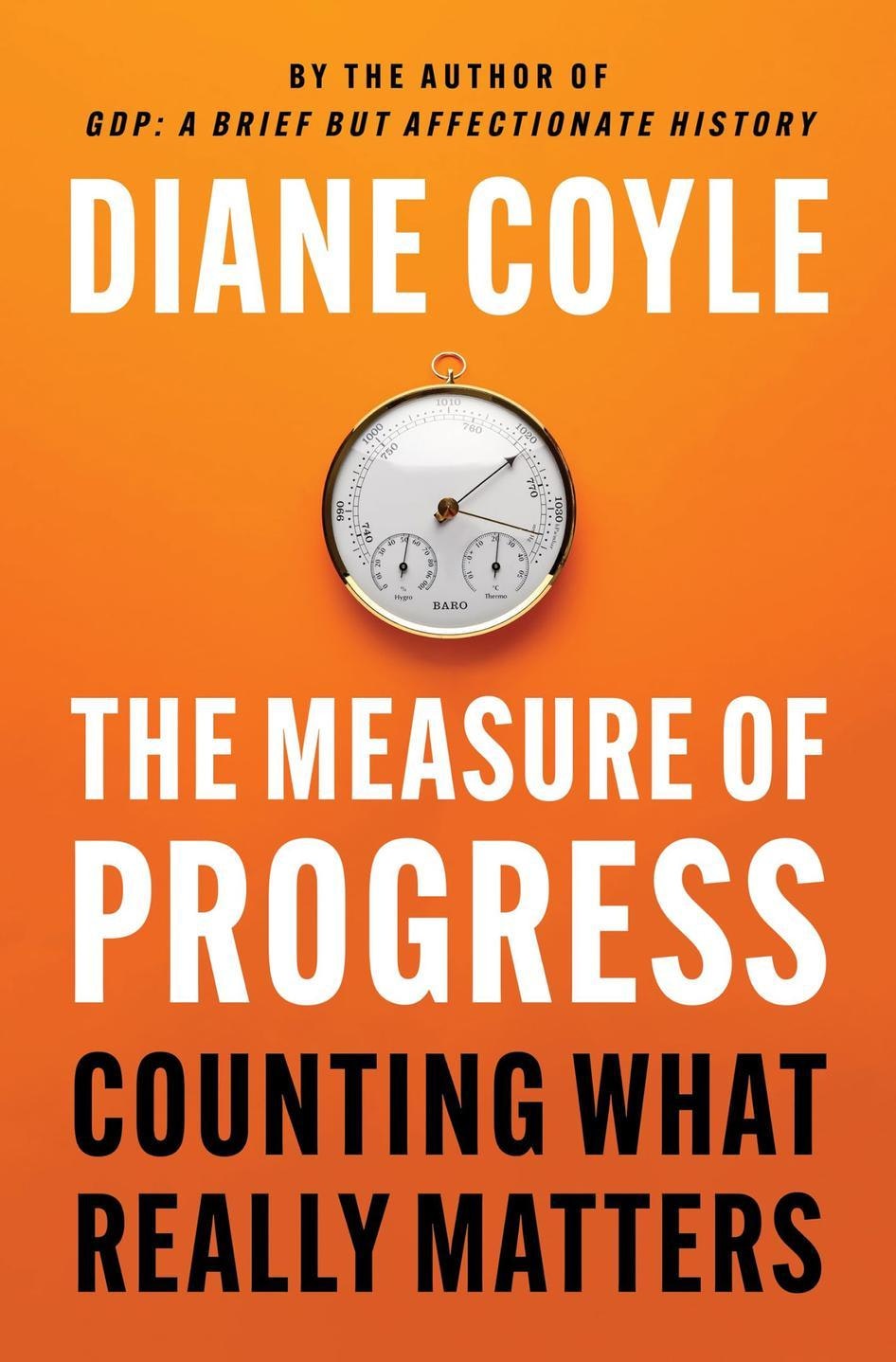This article is taken from the July 2025 issue of The Critic. To get the full magazine why not subscribe? Right now we’re offering five issues for just £25.
This is an important and timely book on a subject that has for too long been consigned to the fringes of economic and policy thinking: finding a more accurate metric than Gross Domestic Product (GDP) to measure economic growth and value. We continue to prostrate ourselves before this statistical idol from the 1940s, despite the fact that it almost comically fails to capture swathes of the modern economy and makes wild guesses (imputations) about much of the rest.
This not only induces what could be an unnecessary and self-reinforcing sense of economic failure but also incentivises GDP-fixated politicians to pursue policies that appease the idol at the expense of human flourishing. As GDP sends increasingly wonky signals, we are setting ourselves up to fail.
GDP was invented to facilitate the macroeconomic management that emerged from the Keynesian revolution, and it was never designed as a measure of wellbeing. Nevertheless, its historic shortcomings — the fact that it does not count productive care work carried out in the home, fails to account for environmental damage and externalities and undervalues many innovations — are now supplemented by a host of new problems.

Indeed, according to the economist Zvi Griliches, about 80 per cent of the modern Western economy is “hard to measure” using conventional GDP. There is an international convention on how the metric works that is laid down in the System of National Accounts (SNA) overseen and regularly adjusted by a United Nations committee that has, says Diane Coyle, become a “distorting lens or even a set of blinkers. A new one is needed.”
It is widely understood that productivity in services, and particularly public services, is harder to measure than manufacturing, which still accounted for around 40 per cent of the UK economy at the birth of GDP. But we now have the extra measurement problems described in the middle four chapters of the book entitled “Dematerialisation”, “Disintermediation”, “Free” and “Borders”.
The iPhone, which has replaced the jumbo jet as the most profitable product of all time, illustrates most of these new phenomena. Apple manufactures no part of the phone; rather it designs, brands and sells it. How is the value produced by hundreds of agents in 43 countries in the supply chain to be accurately counted and distributed? And when a finished phone is shipped from, say, India to Japan to be sold, should it still count as a US export? Moreover, on your phone or Apple laptop, you will receive many services now essential to modern life — email, social media, internet search, conference calls — for free.
It seems daft that these are not counted properly in the growth metric and, according to Coyle, cloud computing actually causes GDP to fall. “The most valuable businesses in the world, ever, are giving away services. They are driven by a fuel nobody knows how to value,” as Coyle puts it.
On the other side of the balance sheet, we are now providing our own DIY services online, say in banking or booking a holiday, that used to be provided by high street institutions. These services have, in the jargon, moved across the production boundary from paid to unpaid activities and so are also invisible to GDP even though they have increased efficiency and convenience.
The slow-down in productivity in most developed economies at the same time that our lives have been transformed by technology is a paradox that surely points to a measurement problem. Indeed, some Dutch economists have argued that counting the free stuff properly would mean a 3.4 per cent increase to GDP and a 7.8 per cent increase to household consumption.

There is also the problem of comparing ourselves unfavourably today with past growth spurts artificially boosted by the current GDP metric. The movement of women into the full-time paid workforce at all levels over the past 60 years, from around 25 per cent in the late 1950s to over 70 per cent by the late 1990s did, of course, provide a significant, and unrepeatable, increase to growth and productivity (boosted further by the rapid expansion of the white goods industry).
But because GDP does not count productive work done in the home, it was also the subject of an accounting sleight of hand. It was registered as a simple plus to the workforce, to the income of our economies and families and to women themselves. We did not account on the other side of the ledger for the loss of work being done by women in the family and community in the old breadwinner-homemaker economy.
If you shift from a single income household with a homemaker to one with two breadwinners and a third person who’s a childcarer, you have three paid jobs instead of one and therefore more GDP — but not necessarily a corresponding increase in human welfare. Similarly, just as the rise in female employment in the GDP economy was trailing off, the post big-bang financial sector provided another boost, arguably an artificially impressive one, to both GDP and productivity.
Thanks to a change in the way that financial services sector output was measured in 1993, it is estimated that the UK sector’s share of GDP in 2008 of 9 per cent was between 25 and 50 per cent higher than it should have been. And thanks to the same measurement quirk, the sector made its biggest ever contribution to UK GDP in 2008, just as banks were folding and huge taxpayer bailouts were required.
There is a geopolitical aspect to the GDP metric too in the way that it reinforces Europe’s inferiority complex in relation to the US. Using conventional GDP per capita, the average European standard of living is about two thirds that of the US; however, a metric that includes leisure time and longevity (and inequality) narrows the gap to about 15 per cent. In France it is estimated at just 8 per cent.

No metric will ever be perfect, but the current one has drifted too far away from painting an accurate picture of economic value and progress, especially when it comes to the failure to account for our use of natural resources and digital technologies.
And this builds on the long-standing problem of struggling to measure innovation. Coyle cites the case of new treatments for Parkinson’s using ultrasound that will potentially eliminate the Parkinson’s drug industry, causing GDP to fall.
I would add that the failure to capture productive work done in the family has become an even bigger problem in our ageing, low-fertility societies, something that Coyle surprisingly underplays. Not only does the continuing failure to count this essential work — raising productive, well-balanced children or looking after the growing army of the frail elderly — contribute to its low status, but an ageing society necessarily directs more useful care work into a GDP void.
Consider a well-paid middle-aged person who stops working full-time to look after an elderly relative at home. The GDP economy loses part of the contribution of the middle-aged person plus the demand of the elderly person for care in a private care home. Yet in most cases that elderly person is much happier staying in their own home and the state saves around £50,000 a year on their care (assuming they qualified for support).
Lower GDP, yes, but higher wellbeing and less demand on the state. As more productive time is spent in the home, thanks both to technology making homeworking easier and there being more housebound old people, its place in the measurement system demands an overhaul.
GDP is in fact regularly tweaked by the UN committee that oversees it. Coyle says that the latest tweaks were disappointing, and the accumulation of barnacles on the GDP boat now requires more ambitious reform. She reports, reassuringly, that an increasing number of the hard-headed experts in the field are coming to the same conclusion. Finding alternatives to GDP is no longer a slightly new-agey footnote in economics.
There is currently no consensus on what the alternative would look like, and I confess I did not fully understand Coyle’s own proposal — large parts of the book are very technical. I would have preferred something aimed more at the general reader, something politicians could grasp, as with her earlier excellent book GDP: A Brief but Affectionate History.
This remains a vital argument and one that is feeding into a more general anxiety about the reliability of our economic statistics. The government has so far shown little interest in the subject, but, when it fails to raise the level of our increasingly misleading GDP metric, it might see the value of acquiring a new one.











